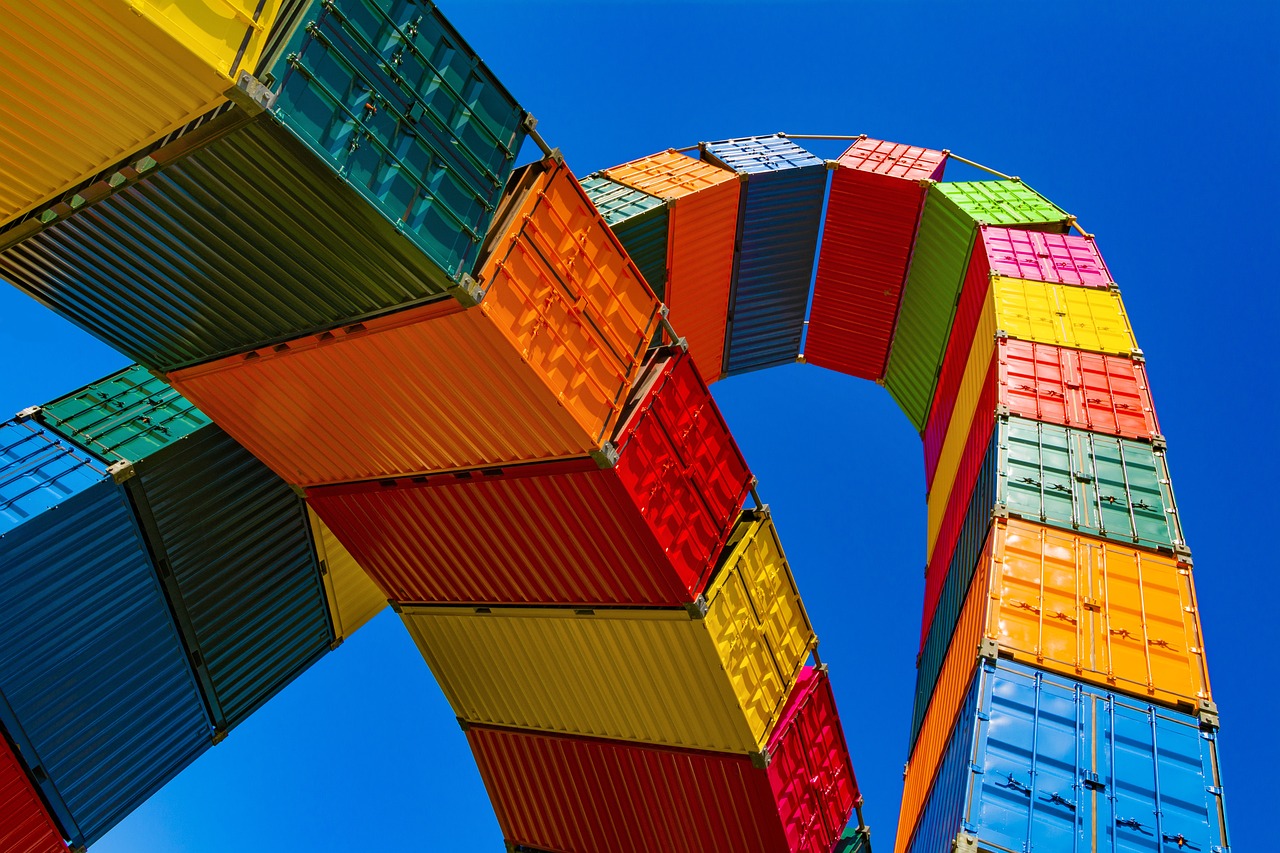Container gardening is a versatile method of growing plants in pots or other containers. To ensure success, focus on selecting the right plants, using quality soil, ensuring proper drainage, and providing adequate sunlight and water. Regular maintenance and fertilization are also essential for a thriving container garden.
Gardening in containers has gained immense popularity among urban dwellers and gardening enthusiasts alike. With limited space available, container gardening allows individuals to cultivate a variety of plants in small areas such as balconies, patios, or even indoors. This method not only maximizes space but also provides flexibility in plant selection and arrangement.
Container gardening is ideal for various types of plants, including flowers, herbs, vegetables, and even small trees. The use of different container sizes and styles can enhance the aesthetic appeal of outdoor or indoor spaces while serving functional purposes for growing food or decorative plants. Understanding the fundamentals of container gardening can lead to a successful and rewarding experience.
Choosing the Right Containers

The choice of container plays a crucial role in the success of your container garden. Various materials can be used for containers, and each has its own benefits and drawbacks. Here are some common materials:
- Plastic: Lightweight and inexpensive, plastic containers retain moisture well.
- Terracotta: Porous and attractive, terracotta allows for good air circulation but may dry out quickly.
- Wood: Natural-looking and insulating, wood containers can rot over time unless treated.
- Metal: Durable and stylish, metal containers can heat up quickly, potentially harming plant roots.
When selecting a container, consider the size and depth required for the plants you wish to grow. Larger containers provide more room for root systems and retain moisture better than smaller ones. Ensure that any container you choose has adequate drainage holes to prevent waterlogging, which can lead to root rot.
Soil Selection
The type of soil used in container gardening is just as important as the container itself. Standard garden soil is not suitable for containers because it does not drain well and can compact over time. Instead, opt for a high-quality potting mix designed specifically for container gardening. These mixes often contain a blend of organic matter, peat moss, perlite, or vermiculite that promotes good drainage and aeration.
Many potting mixes also come with added fertilizers that provide essential nutrients to your plants. However, as plants grow, they will deplete these nutrients over time. Regularly supplementing with liquid fertilizers or slow-release granules can help maintain healthy growth throughout the season.
Watering Wisely
Proper watering is vital for the health of container plants. Unlike traditional gardens, containers can dry out quickly due to their limited soil volume and exposure to the elements. Here are some tips for effective watering:
- Check soil moisture regularly by sticking your finger about an inch deep into the soil.
- Water thoroughly until excess water drains from the bottom of the container.
- Avoid allowing your plants to sit in standing water.
- Consider using self-watering containers to simplify the process.
During hot weather or when plants are actively growing, you may need to water more frequently. Conversely, reduce watering during cooler months or when plants are dormant. Monitoring your plants’ needs will help you establish an effective watering routine.
Sunlight Requirements
Light is another crucial factor in successful container gardening. Most flowering plants and vegetables require at least six hours of direct sunlight per day to thrive. However, some plants prefer partial shade. Before planting, research the sunlight requirements of your chosen plants to ensure they are placed in the right location.
For areas with limited sunlight, consider using reflective surfaces or moving containers throughout the day to maximize light exposure. Additionally, using grow lights indoors can help supplement natural light during darker months.
| Plant Type | Sunlight Requirement | Ideal Container Size |
|---|---|---|
| Tomatoes | Full Sun | 5-gallon pot |
| Basil | Full Sun | 1-gallon pot |
| Lettuce | Partial Shade | 2-gallon pot |
| Petunias | Full Sun | 12-inch pot |
Understanding these basic principles will guide you in establishing
Plant Selection for Container Gardening
Choosing the right plants is vital for a successful container garden. Not all plants thrive in containers due to space limitations and varying growth habits. It is essential to consider the growth requirements and compatibility of different plant types when selecting what to grow. Here are some tips to help you choose the best plants for your containers:
- Consider Growth Habit: Determine whether plants are bushy, trailing, or upright. Mixing different growth habits can create visual interest.
- Choose Companion Plants: Some plants grow better together. For example, herbs like basil can thrive alongside tomatoes. Research companion planting for optimal results.
- Check Hardiness Zones: Ensure that the plants you select are suitable for your local climate and hardiness zone.
- Opt for Dwarf Varieties: Many vegetables and flowering plants have dwarf versions that fit perfectly in containers without compromising yield.
Popular Container Plants
Here are some popular choices for container gardening, categorized by type:
Vegetables
- Cherry Tomatoes: These small fruits thrive in containers and produce abundantly.
- Radishes: Fast-growing and space-efficient, radishes are perfect for smaller pots.
- Peppers: Both sweet and hot varieties flourish in containers.
- Herbs: Basil, parsley, and cilantro are great options that also enhance culinary dishes.
Flowers
- Petunias: These vibrant flowers add color and are easy to care for.
- Marigolds: Known for their pest-repelling properties, marigolds are both beautiful and practical.
- Pansies: With a range of colors, pansies can brighten up any container garden.
- Sedums: These succulent plants are drought-tolerant and perfect for container arrangements.
Foliage Plants
- Ferns: Ideal for shaded areas, ferns bring lush greenery to containers.
- Caladiums: With their colorful leaves, caladiums add a tropical flair to your garden.
- Spider Plants: These hardy plants adapt well to different light conditions, making them great for beginners.
Container Arrangement Techniques

The arrangement of plants within your containers can dramatically affect the overall aesthetic and health of your garden. Here are some effective techniques for arranging plants in containers:
The Thriller, Filler, Spiller Method
This popular design technique involves three types of plants:
- Thriller: A tall plant that serves as the focal point, such as a ornamental grass or a larger flowering plant.
- Filler: Medium-sized plants that fill in the space around the thriller, providing volume. Examples include petunias or marigolds.
- Spiller: Trailing plants that cascade over the sides of the container, such as ivy or sweet potato vine.
Color and Texture Considerations
Mixing colors and textures can create an eye-catching display. Consider the following tips:
- Color Schemes: Choose a color palette that complements your space. Contrasting colors can make a bold statement, while analogous colors create harmony.
- Texture Variety: Combine smooth-leaved plants with those that have fuzzy or jagged leaves to add depth and interest.
- Seasonal Changes: Plan for seasonal changes by incorporating plants that bloom at different times, ensuring continuous color throughout the year.
Pest Management in Container Gardens
Pests can pose a significant threat to container gardens. However, several strategies can help manage pests effectively without harming your plants or the environment:

- Cultural Practices: Maintain plant health through proper watering, fertilization, and spacing to reduce stress and susceptibility to pests.
- Natural Predators: Encourage beneficial insects like ladybugs and lacewings that prey on harmful pests.
- Organic Pesticides: Use organic solutions such as neem oil or insecticidal soap when necessary, applying them in the early morning or late evening to minimize harm to beneficial insects.
- Regular Monitoring: Conduct frequent checks for signs of pests or disease. Early detection can prevent serious infestations.
Pest management requires vigilance and adaptability. By employing these practices, you can protect your container garden effectively while maintaining a healthy growing environment.
Seasonal Care for Container Gardens
Maintaining a container garden requires attention to seasonal changes. Each season brings unique challenges and opportunities for growth. Knowing how to care for your containers throughout the year can help ensure a thriving garden.
Spring: Planting and Preparation
As the weather warms, spring is the ideal time to prepare your container garden for planting. Here are some key activities to focus on:
- Soil Preparation: Refresh potting soil by replacing old soil with fresh potting mix. This will replenish nutrients and improve drainage.
- Choosing Plants: Select a mix of cool-season crops like lettuce and pansies that thrive in the cooler temperatures of early spring.
- Watering Routine: As temperatures rise, establish a consistent watering routine. Monitor moisture levels, especially in warmer areas.
- Pest Inspection: Begin regular inspections for pests as plants start to grow, addressing any issues promptly.
Summer: Growth and Maintenance
Summer can be both rewarding and challenging for container gardeners. With longer days and warmer temperatures, plants can flourish, but they also require more care:
- Consistent Watering: Increase watering frequency as containers dry out faster. Check moisture daily, especially during heat waves.
- Fertilization: During the growing season, apply liquid fertilizer every few weeks to support vigorous growth.
- Pruning and Deadheading: Regularly prune plants to encourage bushiness and remove spent flowers to promote new blooms.
- Shade Considerations: If containers are in full sun, consider providing afternoon shade to prevent plant stress and wilting.
Fall: Harvesting and Transition
As summer transitions into fall, it’s time to enjoy the fruits of your labor while preparing for colder months:
- Harvesting: Gather ripe vegetables and herbs regularly to encourage continued production throughout the season.
- Planting Fall Crops: Consider planting cool-weather crops like kale or pansies that can withstand falling temperatures.
- Preparing for Winter: Start thinking about winterizing containers. For sensitive plants, consider bringing them indoors or providing protective coverings.
- Pest Management: Continue monitoring for pests, especially as plants become stressed from cooler temperatures.
Winter: Protection and Care
Winter poses significant challenges for container gardening. However, with proper care, many plants can survive the cold:
- Insulating Containers: Wrap containers in burlap or bubble wrap to protect roots from freezing temperatures.
- Choosing Hardy Varieties: Select hardy plants like evergreen shrubs or certain perennials that can withstand winter conditions.
- Indoor Care: For plants brought indoors, ensure they receive adequate light and maintain humidity levels to prevent dry air stress.
- Monitoring Watering: Indoor plants will still need watering; check moisture levels regularly and adjust as needed.
Tips for Successful Container Gardening

A few additional strategies can enhance your container gardening experience. These tips are designed to maximize both the aesthetic value and productivity of your garden:
Choosing the Right Location
The location of your containers significantly impacts plant health. Consider the following factors when deciding where to place your containers:
- Sunlight Exposure: Ensure your plants receive the appropriate amount of sunlight based on their needs. Avoid placing containers in shaded areas unless the plants require it.
- Wind Protection: Position containers in a sheltered area to protect them from harsh winds that can damage plants.
- Aesthetic Arrangement: Group containers of varying heights and plant types for visual interest and to create a cohesive garden design.
Using Quality Tools
The right tools can make a significant difference in container gardening. Investing in quality gardening tools will pay off in ease and efficiency. Here are some essential tools to consider:
- Trowel: A small hand trowel is perfect for planting and transplanting in containers.
- Pruners: Sharp pruning shears help maintain plant health by allowing for clean cuts during trimming.
- Watering Can: A watering can with a long spout allows precise watering without disturbing plants too much.
- Soil Moisture Meter: This tool helps you monitor moisture levels accurately, allowing you to water efficiently.
Experimenting with Container Types
Diversity in container selection can lead to unique gardening experiences. Explore different container styles such as:
- Hanging Baskets: Perfect for trailing plants, these add vertical interest to your space.
- Vertical Planters: These are ideal for maximizing space and can be used for herbs or flowers.
- Self-Watering Containers: These are beneficial for maintaining consistent moisture levels without daily watering.
- Repurposed Containers: Get creative with items like buckets or wooden crates to create an eclectic look.
By implementing these seasonal care strategies and tips, you can cultivate a beautiful and productive container garden that thrives throughout the year.
Advanced Techniques for Container Gardening
In addition to the fundamental practices previously discussed, there are advanced techniques that can further enhance your container gardening experience. These methods can help you maximize yield, improve plant health, and create stunning displays.
Hydroponic Container Gardening
Hydroponics is a method of growing plants without soil, using nutrient-rich water instead. This technique can be adapted for container gardening and offers several benefits:
- Faster Growth: Plants grown hydroponically often grow faster than those in soil due to direct access to nutrients.
- Reduced Pest Issues: The absence of soil minimizes the risk of soil-borne pests and diseases.
- Space Efficiency: Hydroponic systems can be set up vertically, making them ideal for small spaces.
- Water Conservation: Hydroponics uses less water compared to traditional gardening, as the water is recirculated within the system.
To get started with hydroponic container gardening, consider investing in a simple kit or researching DIY systems that can be built at home.
Companion Planting Strategies
Companion planting involves growing different plants together for mutual benefit. Here are some effective companion planting strategies for container gardens:
- Herbs and Vegetables: Herbs like basil and cilantro can improve the flavor of adjacent vegetables while repelling pests.
- Flower and Vegetable Combinations: Marigolds planted alongside vegetables can deter harmful insects.
- Diverse Plant Heights: Taller plants can provide shade for shorter ones, creating a microclimate in your containers.
- Nitrogen Fixers: Plant legumes like peas or beans alongside nitrogen-hungry plants to naturally enrich the soil.
Utilizing Cover Crops
If your container garden will have downtime, consider planting cover crops. These are plants grown to improve soil health rather than for harvest. Benefits include:
- Soil Enrichment: Cover crops add organic matter back into the soil once they are turned under.
- Erosion Prevention: They help prevent soil erosion during off-seasons.
- Pest Suppression: Certain cover crops can deter pest populations when planted between cropping seasons.
Examples of cover crops suitable for containers include clover and vetch, which can be grown in larger containers during the offseason.
Final Thoughts
Container gardening offers a unique opportunity to cultivate plants in diverse spaces, from small balconies to expansive patios. By following the tips and techniques outlined in this article, you can create a successful container garden that thrives year-round. Remember to choose the right containers, select suitable plants, and maintain proper care throughout the seasons.
As you gain experience, feel free to experiment with different plants, container types, and advanced techniques such as hydroponics and companion planting. Your container garden can not only provide fresh produce and beautiful flowers but also serve as a rewarding hobby that enhances your living space.
Ultimately, container gardening is about creativity and enjoying the process of growth. Whether you are growing herbs for culinary use or flowers for visual appeal, each container holds the potential for beauty and bounty. Embrace the journey, learn from your experiences, and share your successes with fellow gardening enthusiasts.
